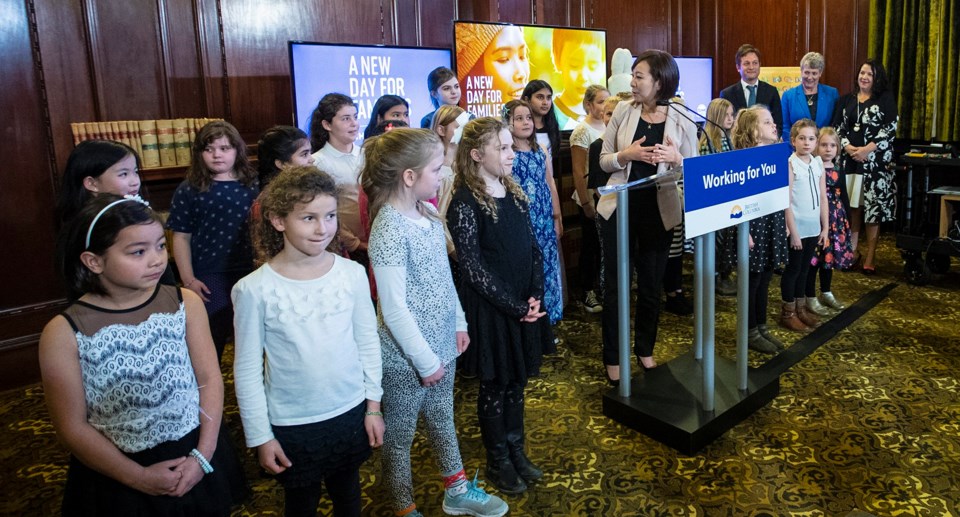Greater Victoria parents desperate to find child care will soon have 439 new licensed spaces to choose from, thanks to a partnership between the B.C. government and the Greater Victoria School District.
The new spaces are expected open late next year and are funded by $4.6 million from the Childcare B.C. New Spaces Fund. The Greater Victoria School District was the first agency to qualify for funding through the program, which allows school boards to partner with non-profit agencies to apply for up to $1 million per facility.
Six elementary schools will have child care, with 66 spaces at Doncaster Elementary, 85 at Frank Hobbs Elementary, 37 at Macaulay Elementary, 91 at Tillicum Elementary, 57 at Vic West Elementary, and 103 at Willows Elementary.
Most of the new spaces are for after-school care, with 323 spots for school-aged children. The balance are for younger children.
Jordan Watters, chairwoman of the Greater Victoria School District, said most of the spaces will be in purpose-built learning studios on school property. She estimated they would be ready by late 2019.
The new spaces will be managed by a variety of non-profit organizations.
B.C. Liberal child care critic Laurie Throness said the numbers were misleading, noting Greater Victoria has lost more than 447 child care spaces since February due to daycares closing. The figures were obtained from Island Health, which licenses daycares, through a freedom of information request.
There are 27 daycares with a total of 328 spaces waiting for licensing approval. Even with those new spaces, Throness said, there’s a net increase of about 300 spaces — much lower than the NDP is touting.
In response, the ministry said: “It appears health authority data is being mixed with ministry funding data and thereby producing what appears to be an apples-to-oranges comparison.
“Licensing data changes on a monthly basis while the data used in the analysis appears to cover different time periods for closures and applications.”
Throness also said the government has shown a preference for working with non-profit agencies, and private, market-based providers feel like they have been left out of the equation.
In August, the Times Colonist reported that several child-care centres across Greater Victoria had closed, eliminating dozens of spaces, due to the pressures of rising costs and staffing shortages.
Katrina Chen, the minister of state for child care, said the government is working to fund training programs and offer wage incentives to ensure there are enough early childhood educators to work at the new facilities.
The Ministry of Children and Family Development said it is on track to reach its goal of adding 2,700 child care spaces across the province this year.
Victoria Mayor Lisa Helps welcomed news of the spaces. “We’ve heard over and over, from both parents and employers, that access to affordable, high-quality child care is a key priority for keeping life liveable and business prosperous in Victoria,” Helps said.
The City of Victoria’s child care solutions working group has spent the past 18 months collaborating with School District 61 and other community partners and has set a goal of opening at least 300 new child care spaces in the next four years, she said.
“Today’s announcement is a positive step forward,” Helps said.
Education Minister Rob Fleming said that after housing, which is already high, child care is the biggest household expense. “So I’m very proud today to have an announcement that delivers on the availability and the affordability of spaces,” said Fleming, who is the MLA for Victoria-Swan Lake.
There are many advantages to partnering child care facilities with the school district, he said. It allows parents to drop off school-age kids and toddlers at the same place, children in preschool can have a seamless transition to kindergarten, and childhood educators are part of the school’s education team, he said.



